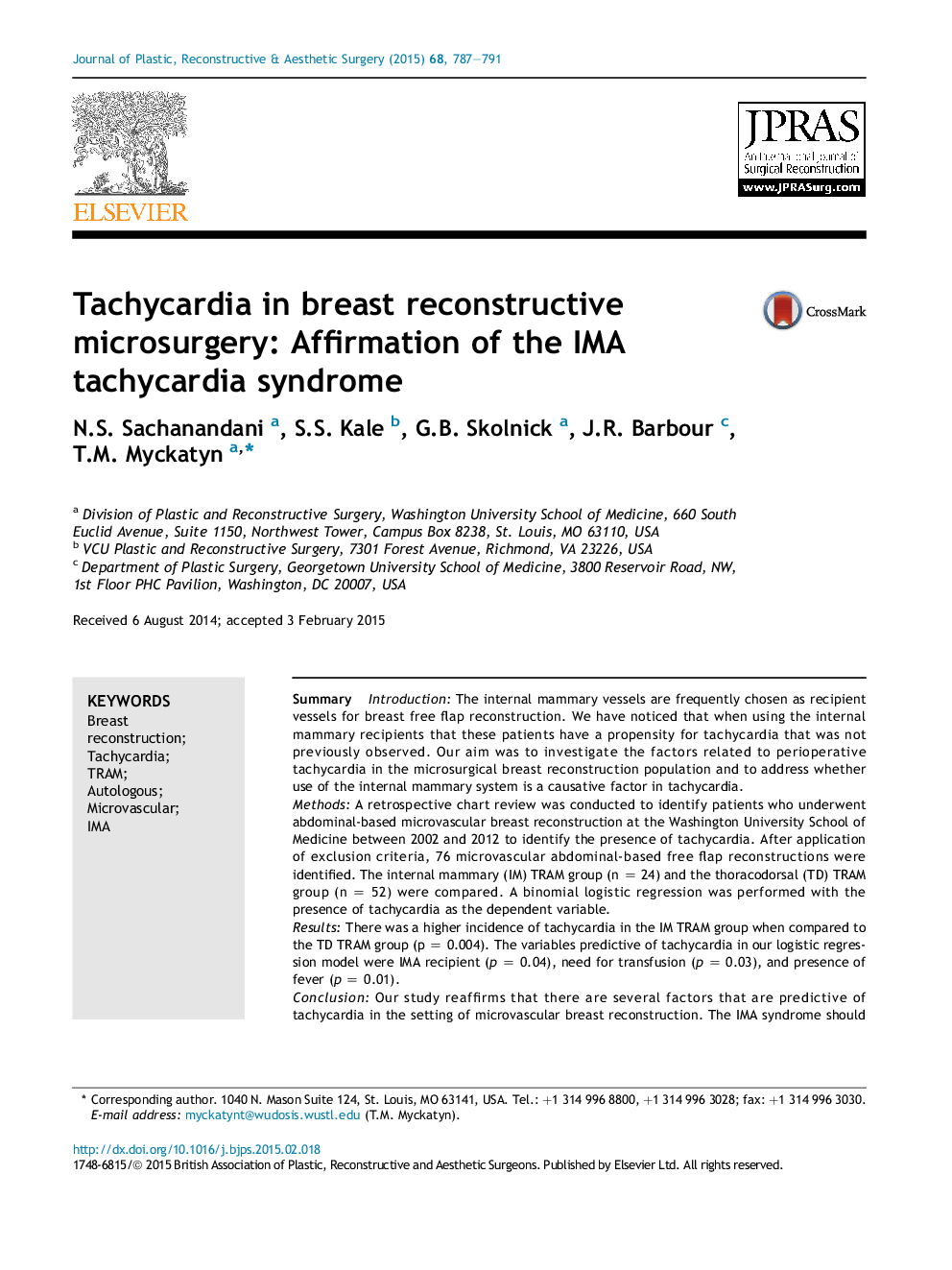| Article ID | Journal | Published Year | Pages | File Type |
|---|---|---|---|---|
| 6214479 | Journal of Plastic, Reconstructive & Aesthetic Surgery | 2015 | 5 Pages |
SummaryIntroductionThe internal mammary vessels are frequently chosen as recipient vessels for breast free flap reconstruction. We have noticed that when using the internal mammary recipients that these patients have a propensity for tachycardia that was not previously observed. Our aim was to investigate the factors related to perioperative tachycardia in the microsurgical breast reconstruction population and to address whether use of the internal mammary system is a causative factor in tachycardia.MethodsA retrospective chart review was conducted to identify patients who underwent abdominal-based microvascular breast reconstruction at the Washington University School of Medicine between 2002 and 2012 to identify the presence of tachycardia. After application of exclusion criteria, 76 microvascular abdominal-based free flap reconstructions were identified. The internal mammary (IM) TRAM group (n = 24) and the thoracodorsal (TD) TRAM group (n = 52) were compared. A binomial logistic regression was performed with the presence of tachycardia as the dependent variable.ResultsThere was a higher incidence of tachycardia in the IM TRAM group when compared to the TD TRAM group (p = 0.004). The variables predictive of tachycardia in our logistic regression model were IMA recipient (p = 0.04), need for transfusion (p = 0.03), and presence of fever (p = 0.01).ConclusionOur study reaffirms that there are several factors that are predictive of tachycardia in the setting of microvascular breast reconstruction. The IMA syndrome should be a recognized cause of tachycardia as using these recipient vessels are shown to be predictive of postoperative tachycardia as shown in our study.
